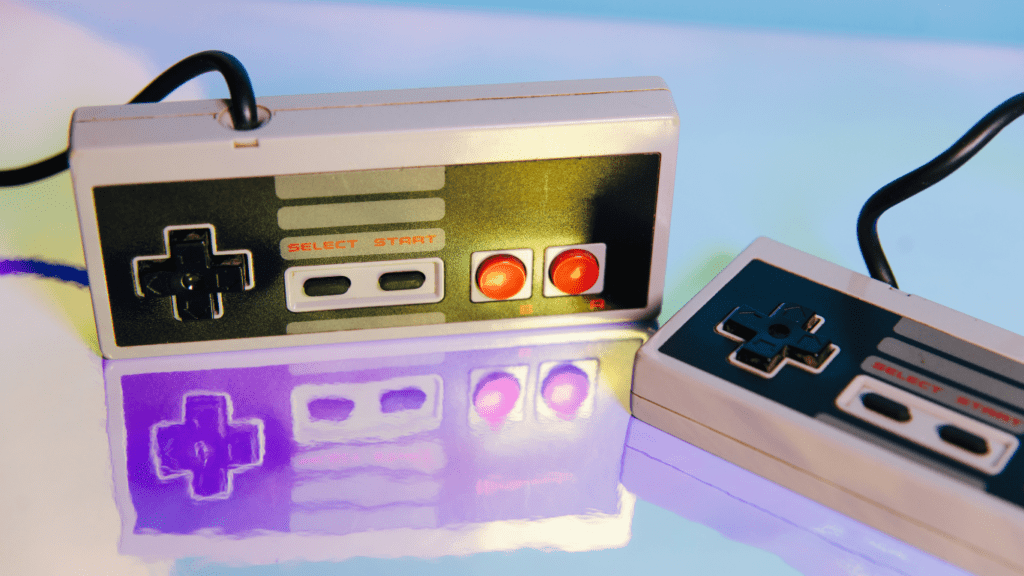Growing up, I’ve witnessed the remarkable transformation of gaming consoles from simple pixelated screens to immersive virtual worlds. The evolution of gaming consoles has been nothing short of revolutionary, shaping the way we play and interact with technology. From the iconic Atari 2600 to the cutting-edge PlayStation 5, each console generation has pushed boundaries and redefined gaming experiences.
As a gaming enthusiast, exploring the journey of gaming consoles from their humble beginnings to the sophisticated systems of today is a fascinating ride. The advancements in graphics, processing power, and online capabilities have not only enhanced gameplay but also brought communities together in ways we never thought possible. Join me as we delve into the evolution of gaming consoles, tracing their evolution from the past to the present, and uncovering the innovations that have paved the way for the future of gaming.
The Evolution of Gaming Consoles: From Past to Present
Exploring the evolution of gaming consoles unveils a fascinating journey from their humble beginnings to the cutting-edge technology we experience today. Each console generation, from classics like the Atari 2600 to the latest PlayStation 5, has significantly transformed the way we play and interact with games. These advancements in graphics, processing capabilities, and online features have not only enhanced gameplay but also fostered new forms of community engagement within the gaming world. Delving into the evolution of gaming consoles provides valuable insights into the innovations driving the future of gaming.
The Dawn of Gaming: 1970s to 1980s
The 1970s and 1980s marked the dawn of the gaming era, where home consoles were starting to gain traction and shape the future of interactive entertainment.
Home Consoles and the Video Game Crash of 1983
In the early 1980s, the gaming industry faced a significant setback known as the Video Game Crash of 1983. This crash was primarily caused by market saturation, poor game quality, and a lack of consumer interest. As a result, several gaming companies went out of business, leading to a decline in the popularity of video games.
Key Innovations in Early Consoles
During the 1970s and 1980s, early gaming consoles introduced key innovations that laid the foundation for modern gaming. Systems like the Atari 2600 brought gaming into the living rooms of millions, popularizing iconic titles such as “Pac-Man” and “Space Invaders.” These consoles revolutionized how people interacted with technology at home, setting the stage for future advancements in the gaming industry.
Transition and Transformation: 1990s

The 1990s marked a significant era in the evolution of gaming consoles, defining a transition and transformation that set the stage for modern gaming experiences.
- The Rise of 16-Bit and 32/64-Bit Systems
In the early 1990s, the gaming landscape saw a shift towards more powerful hardware with the introduction of 16-bit consoles like the Super Nintendo Entertainment System (SNES) and the Sega Mega Drive (Genesis). These systems offered enhanced graphics and sound capabilities, delivering a more immersive gaming experience compared to their predecessors. The advancement to 32/64-bit systems further revolutionized gaming in the mid to late 1990s. Sega’s Saturn, Sony’s PlayStation, and Nintendo’s Nintendo 64 were at the forefront of this technological leap, providing smoother gameplay, greater processing power, and the ability to render 3D graphics with increased detail and realism. Titles like “Super Mario 64,” “Final Fantasy VII,” and “Tomb Raider” showcased the potential of these systems and captivated gamers worldwide. - The Emergence of 3D Gaming
One of the most notable developments in the 1990s was the emergence of 3D gaming, which transformed the way players engaged with virtual worlds. With the shift from 2D to 3D environments, games offered a new level of immersion and creativity, allowing developers to craft expansive worlds and complex gameplay mechanics. Titles such as “Quake,” “Tomb Raider,” and “Star Fox 64” demonstrated the capabilities of 3D technology, pushing the boundaries of storytelling and gameplay innovation. The introduction of polygonal graphics, real-time rendering, and dynamic camera perspectives set a new standard for the industry, laying the foundation for future generations of gaming experiences. As gaming consoles evolved throughout the 1990s, the rise of 16-bit and 32/64-bit systems, along with the emergence of 3D gaming, defined a transformative period that shaped the direction of interactive entertainment for years to come.
Modern Gaming Consoles: 2000s to Present
In the 2000s, gaming consoles underwent significant advancements, shaping the landscape of interactive entertainment. This era saw the convergence of cutting-edge technology and innovative gameplay experiences, revolutionizing the way we play and connect with others in the digital realm.
The Era of Online Connectivity
Online connectivity was a game-changer in the world of gaming consoles. It brought players from across the globe together in virtual environments, enabling seamless multiplayer experiences and fostering online communities. Titles like “Halo 2,” “World of Warcraft,” and “Call of Duty” paved the way for competitive online gaming, emphasizing the social aspect of gaming and pushing the boundaries of interactive storytelling.
The integration of online features not only expanded the replay value of games but also introduced a new dimension of competitiveness and collaboration. Players could team up with friends or compete against rivals in real-time, transcending geographical boundaries and creating a truly global gaming community. Online connectivity continues to evolve, with features like cross-platform play and cloud gaming redefining how we engage with games in the digital age.
Hybrid and Motion Gaming Technologies
The advent of hybrid and motion gaming technologies marked a significant shift in how gamers interacted with their favorite titles. Consoles like the Nintendo Wii introduced motion controls, allowing players to physically engage in gameplay through gestures and movements. This innovation brought a new level of immersion and accessibility to gaming, appealing to a broader audience beyond traditional gamers.
With the rise of virtual reality (VR) and augmented reality (AR) technologies, gaming consoles have delved into the realm of immersive experiences, transporting players into fantastical worlds like never before. Titles such as “Beat Saber” and “Half-Life: Alyx” showcase the potential of VR in revolutionizing gameplay mechanics and storytelling, offering unparalleled levels of engagement and immersion.
Hybrid consoles like the Nintendo Switch have further blurred the lines between home and portable gaming, providing the flexibility to play anytime, anywhere. By combining the best of both worlds, hybrid consoles offer diverse gaming experiences tailored to the modern lifestyle, catering to gamers on the go and those seeking the comfort of traditional console gaming.
The integration of these technologies has redefined the gaming landscape, pushing the boundaries of creativity and innovation while bringing players closer to the heart of the action. As we look to the future, the evolution of gaming consoles continues to unfold, promising even more exciting developments and immersive experiences for gamers worldwide.
The Impact of Market Competition
Exploring the impact of market competition on the evolution of gaming consoles unveils a dynamic landscape shaped by industry giants and their strategic maneuvers. The competitive nature of the market has significantly influenced game development and cultural trends, fostering innovation and driving the gaming industry forward.
Industry Giants and Their Strategies
- Sony, Microsoft, and Nintendo – the dominant players in the gaming console arena – continually strive to outdo each other by offering cutting-edge technology and exclusive content.
- Sony’s PlayStation consoles have set industry standards with powerful hardware, a vast library of games, and immersive experiences like virtual reality.
- Microsoft’s Xbox series focuses on integrating online services, backward compatibility, and cloud gaming to enhance user engagement and accessibility.
- Nintendo, known for its innovative approach, has introduced unique gaming experiences through consoles like the Wii and Switch, combining traditional gaming with innovative features like motion controls and hybrid functionality.
- Market competition fuels a cycle of innovation, driving developers to push boundaries and create groundbreaking titles to captivate audiences.
- Cross-platform play, exclusive titles, and advancements in hardware capabilities have transformed gaming experiences, offering players a diverse array of games and immersive worlds to explore.
- The competitive landscape has not only elevated game development standards but also influenced cultural trends, shaping gaming communities and fostering shared experiences among players worldwide.
- Strategic partnerships, exclusive content deals, and technological advancements driven by market competition have redefined gaming culture, making it more diverse, inclusive, and interconnected than ever before.
Future Perspectives in Console Gaming
Continued Technological Advancements
Continued advancements in technology are set to revolutionize the landscape of console gaming further. With the rapid development of hardware capabilities, future consoles are expected to deliver unparalleled graphics, processing power, and immersive experiences. Cutting-edge technologies, such as ray tracing and 8K resolution support, will elevate visual fidelity to new heights, creating lifelike worlds for players to explore.
Predictions for Next-Gen Systems
Looking ahead, the next generation of gaming consoles is likely to focus on bridging the gap between virtual and real worlds. Augmented reality (AR) and virtual reality (VR) are anticipated to play a more prominent role in gaming, offering innovative ways to interact with games and environments. Enhanced integration of AI and machine learning will personalize gaming experiences, adapting gameplay based on individual preferences and behaviors. The future of console gaming holds the promise of seamless integration between physical and digital realms, ushering in an era of unprecedented immersion and interactivity.



